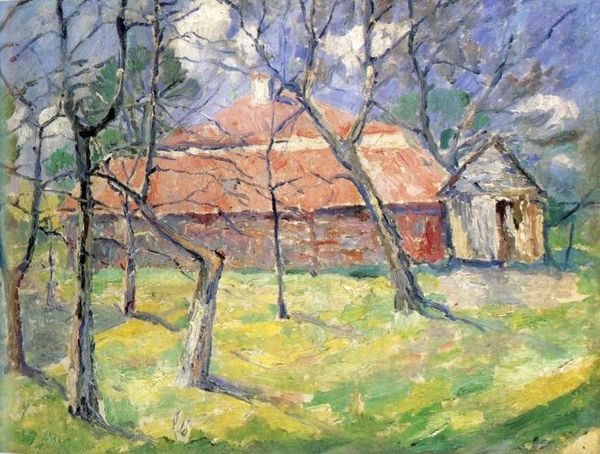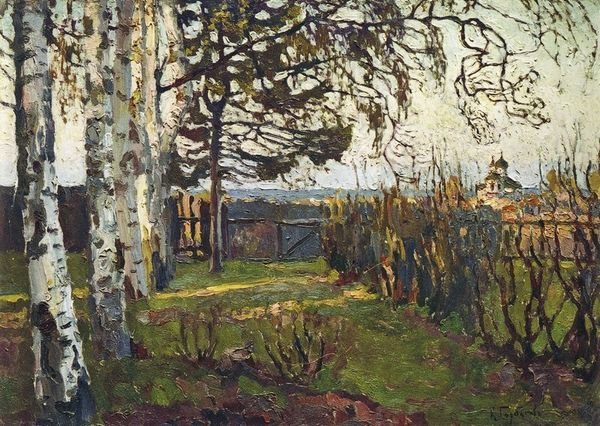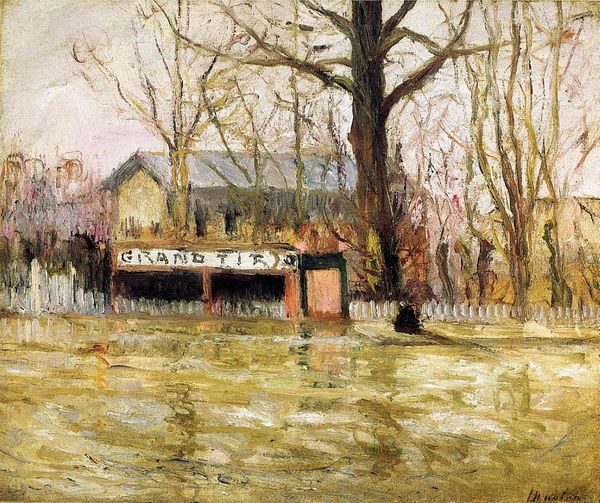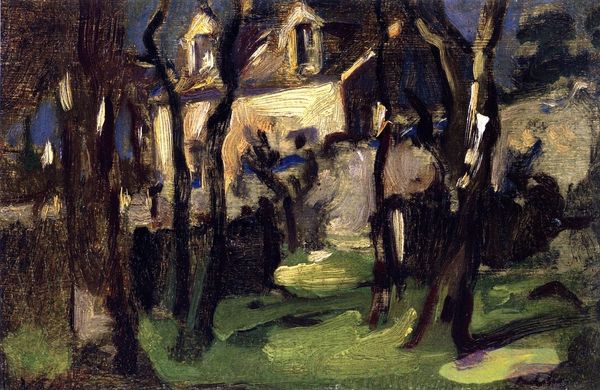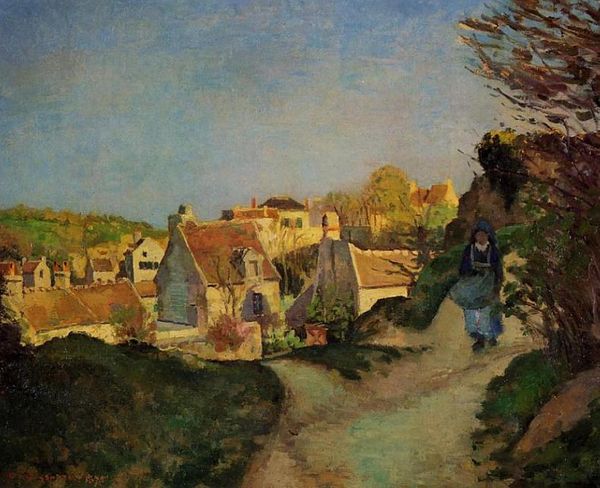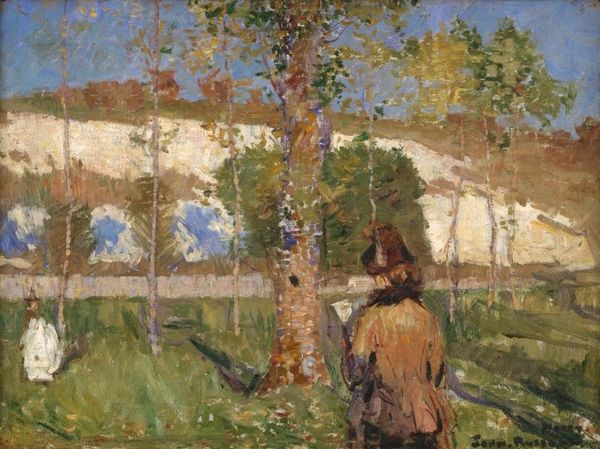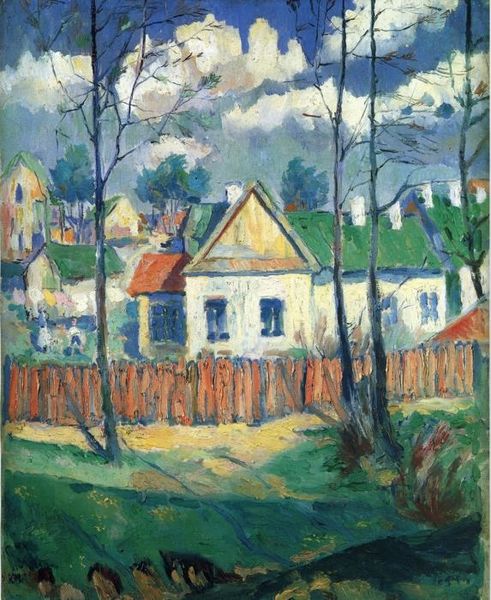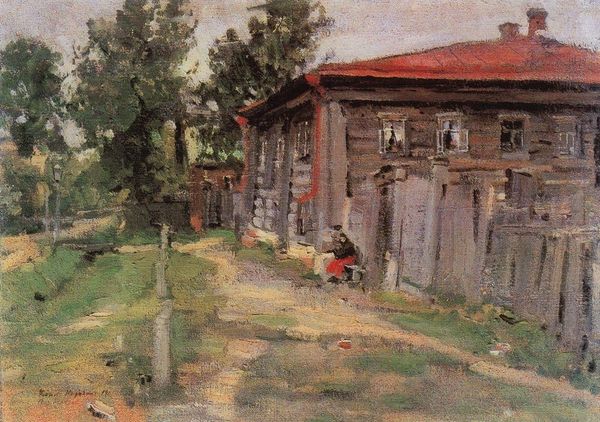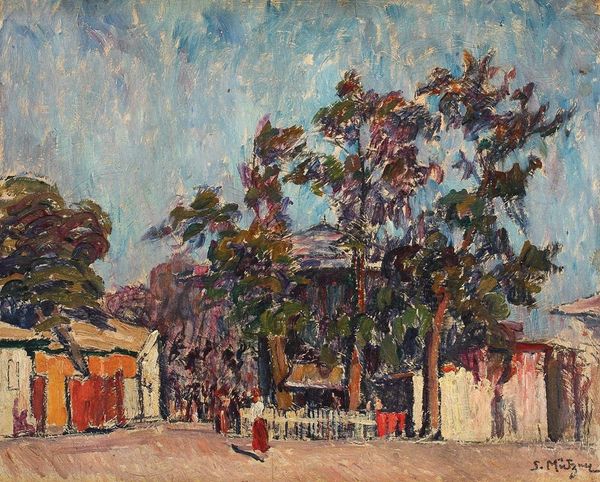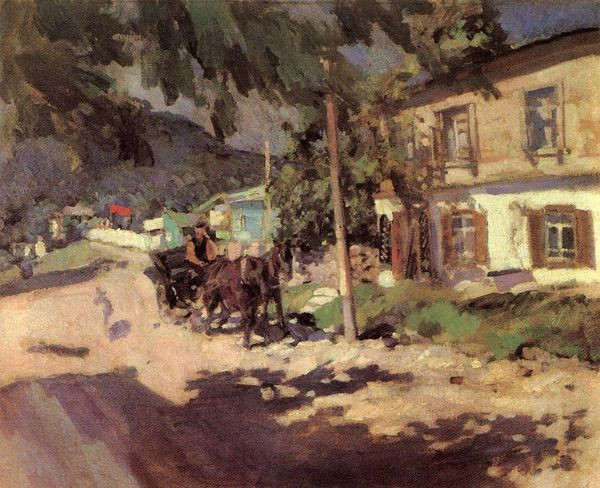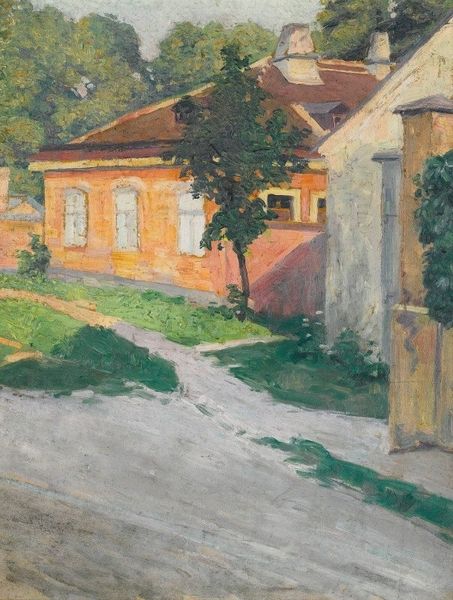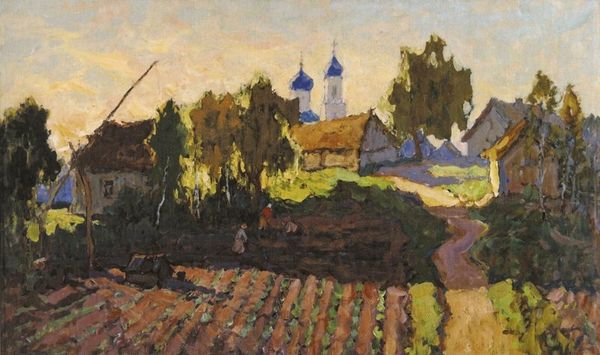
painting, oil-paint
#
portrait
#
painting
#
oil-paint
#
landscape
#
oil painting
#
expressionism
#
naive art
#
female-portraits
#
expressionist
Dimensions: 58.5 x 58.5 cm
Copyright: Public domain
Curator: Standing before us is "Gabriele Münter Painting" crafted by Wassily Kandinsky in 1903. Currently housed at the Lenbachhaus in Munich, this oil on canvas presents a fascinating interplay of portrait and landscape elements. Editor: My first impression is of something melancholic and quietly unsettling, almost as if seen through a haze. The earth tones are warm, yet they evoke a somber mood. What immediately stands out is how the figure is turned away from us, further contributing to that mysterious effect. Curator: Precisely! The painting provides multiple layers of meaning. Gabriele Münter, herself an artist and Kandinsky's partner, stands behind a large format camera, perhaps poised to capture the surrounding Bavarian architecture. Editor: Yes, but that building feels rather… spectral. Kandinsky’s expressive brushstrokes break down the forms, pulling between abstraction and figuration, an uneasy pictorial space, even pushing toward Expressionism. It also emphasizes flatness, defying traditional perspective through those exaggerated verticals. Curator: What resonates is that the painting signifies a potent intersection—art and life converging. Münter's use of photography becomes a poignant comment on art’s capability to not only reflect reality, but to process one’s own place inside of it, even Kandinsky’s understanding of the woman at its center. In a way, it symbolizes progressivism through art during that period. The use of a female photographer during the early 20th century acts as symbol. Editor: Progressivism yes, but visually the dark outlines around forms emphasize solidity. This reminds us of late 19th century Symbolism, with a dash of almost fauvist color choices which give this scene it's naive art spirit. But the underlying sense of the solidity provides its quietness. Curator: It truly provides a special understanding of how memory and perspective combine within early 20th century artwork. Editor: I agree completely! Observing those lines, those compositions, has revealed how an image's structure influences affect.
Comments
No comments
Be the first to comment and join the conversation on the ultimate creative platform.
